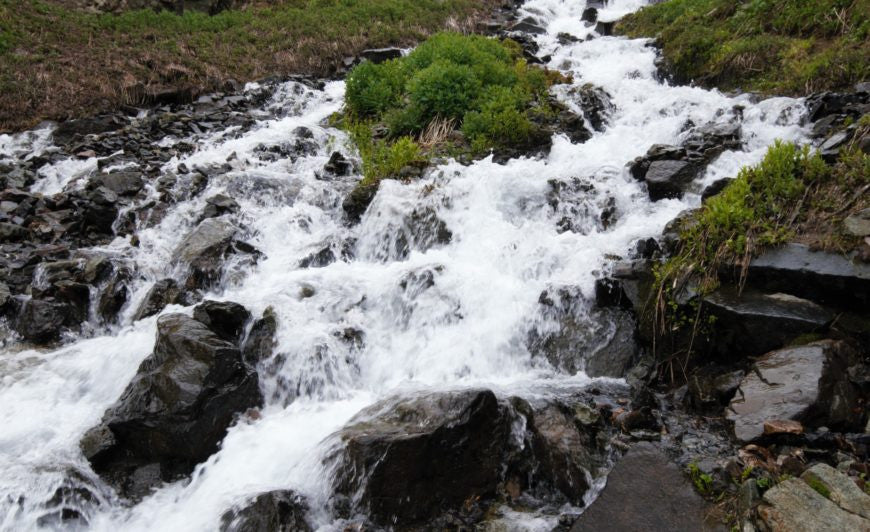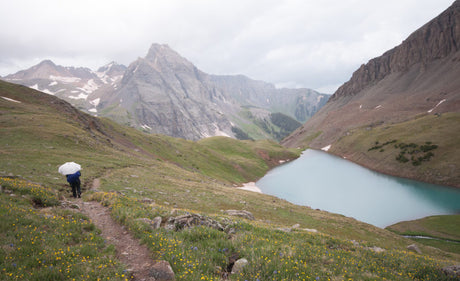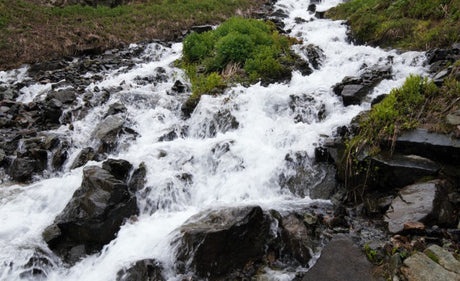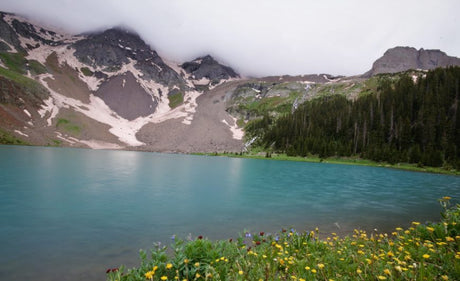What Makes My Backpack Lightweight
Starting in Lightweight Backpacking from Day 1
My first backpack trip was in July 2009 to Blue Lakes in the San Juan mountains near Ridgeway Colorado. The hike is pretty straight forward, 3.1 miles up to the lower lake with ample camping. The elevation gain is 2,400 feet. The trail is a bit steep, but a great introduction to the backpacking world.
Being lightweight my gear choices were pretty easy. I had never backpacked so I didn’t have to wrestle with old habits and ideas.
Base Pack
I started with my base pack, the big three, as most outdoor adventurers call them. These are the three most important things to bring along. Your backpack, sleep system, and shelter.
| Base Pack | OZ | Pounds |
|---|---|---|
|
REI Flash 50 Pack – women’s medium |
40.2 | 2.51 |
| REI Sub Zero 15 degree sleeping bag | 32 | 2.00 |
| Thermarest NeoAir – Short | 8.8 | 0.55 |
| Thermarest NeoAir Stuff Sack | 0.2 | 0.01 |
| Tarp tent Squall 2 (with Stuff Sack) | 33.1 | 2.07 |
| Stakes (5 Titanium) With Stuff Sack | 1.4 | 0.09 |
| Total | 115.7 | 7.23 |
Lightweight Backpack
The REI Flash 50 pack was the lightest internal frame backpack I could find that also had enough space to carry all my gear.

PROS:
- Fit my torso really well
- Carried evenly and balanced
- It was spacious and I never had to worry about everything fitting
CONS:
- After about a year and a half, the internal frame came out of the pouch and made the pack unusable.
- I believe this is why REI stopped making this version of the pack and now offers this one that is 3 LBS. 7 oz.
- REI Co-op Flash 60 pack – women’s
Even with the failure of the first pack, I would recommend it for a beginner. I ended up replacing the Flash 50 with the Flash 60 – Men’s pack that I carried till 2017.
Lightweight Sleep System
My sleep system started out pretty simple – sleeping bag and pad. My sleeping bag was a petite REI subzero 15 degree down sleeping bag. The reason for choosing this bag was pretty simple, it was on sale at the REI garage sale and I got it for $65.00. I know not the best reason to buy a sleeping bag un-researched but in the end, it has turned out to be a great first sleeping bag.
The bag was warm enough for high altitude lakes we like to hike to and compacted down small enough to not take up a large amount of space in my pack.
Therm-a-rest
Once I got my sleeping bag I picked the new, in 2009, Therm-a-rest NeoAir – ¾ length. Not going with a full-length pad is a personal choice for every backpacker. I was giving it a try and found it to be okay. The way the system worked was to empty my backpack and place it at the bottom of the pad for my feet and ankles. I was able to get great night sleeps but in the end, I swapped it out for the Therm-a-rest ProLite Sleeping Pad – Regular.
Ultralight Backpacking Shelter
There are many shelters on the market but if you are going to save on weight you will need to leave the mainstream world of REI and the Camping Worlds.
My boyfriend and I went with a tent but he also carried along a homemade tarp so we could test each one out.
As REI makes some great tents and even some they call lightweight specialty tents are more innovated and lighter. My boyfriend, Aaron, and I went with a Tarptent Squall 2.
Tarptent Squall 2

PROS:
- Only 2 pounds and sleeps 2 people
- Water and bug proof
- Quick set-up
CONS:
- Takes a hiking pole to set up
- Hard to sit up in for extended rain storms
- Single-walled so condensation is always a battle
The Squall 2 was a great first tent to pack around and helped save a ton on weight. Unfortunately, this tent has been discontinued but Tarptent offers many other great one/two person tents for the $200.00 to $300.00 range.
CONCLUSION
The base pack is where the majority of the weight comes from in your pack and I have found over the years that this is the one place that I have replaced most of my gear to cut weight but not comfort.
I have found that if I start at one point I can add or subtract gear based on my trips.
In this continuing journey of backpacking, I am going to discuss the other aspects of my pack and gear I took on my first trip.









0 comments